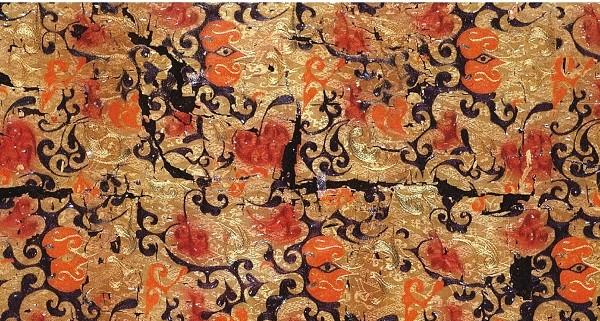Xinmin Evening News (reporter Jiang Yan) Recently, the Hunan Provincial Museum for the first time on the Mawangdui Han tomb unearthed unstructured textiles to systematically clear the warehouse, the latest discovery of the Mawangdui Han tomb unearthed in the diamond pattern qi there are woven characters, etc., to fill the research gap in related fields.

Pictured: The yellow-brown pair of bird diamond patterns excavated from the Mawangdui Han Tomb is "embroidered by the clouds". Hunan Provincial Museum (hereinafter the same)
Yu Yanjiao, director of the Mawangdui Han Tomb and Collection Research and Exhibition Center of the Hunan Provincial Museum, said that writing was found in the fragments of Lingwenqi during the qingku. "This is the first time that the diamond pattern qi excavated from the Mawangdui Han Tomb has woven characters, which is a typical seal and reflects the superb textile weaving skills of the early Han Dynasty."
Pictured: The staff of the Hunan Provincial Museum cleared the cultural relics excavated from the Mawangdui Han Tomb and archived it
In addition, experts found new patterns of silk fabrics in the qingku, enriching the understanding of tomb cultural relics. Yu Yanjiao said that in the longevity embroidery, it was originally thought that there was only a dragon pattern, and this time the phoenix pattern was found. Mawangdui phoenix bird pattern is the standard image of the phoenix bird in the early Han Dynasty, inheriting the Chu style of phoenix bird, implying beauty, auspiciousness and longevity, which is in line with the Han Dynasty's desire for immortality and feathering and ascension.
Experts also further studied the only "feather appliqué silk" unearthed in China that uses feathers as coffin decorations during the clearance process. "Ancient documents have recorded the use of paintings to make coffins, but the use of feathers as coffins is the only one found so far." Dong Xianyan, deputy research librarian of the Hunan Provincial Museum, who has long been engaged in the protection, restoration and research of ancient textile cultural relics, said that there may be 3 to 4 kinds of feathers in the analysis of the shape, but due to the strong carbonization, it is difficult to determine which kind of animal the feathers belong to.